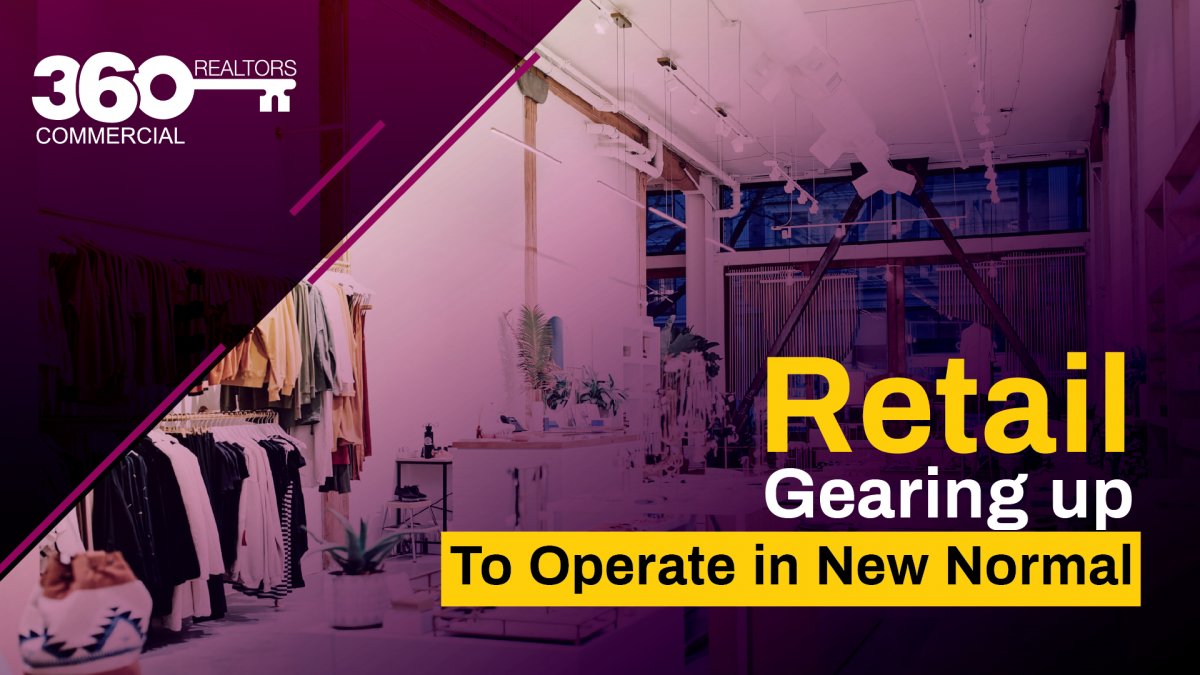Shopping Centres Embrace the New Normal
The last few months have been a very challenging time for the retail realty and although the government has given the permit to the malls to reopen, in the present scenario it’s almost like re-launching a mall. The effort which is required to launch a new mall is the same that the mall developers are making at this moment. But this time around, rather pitting against each other, the developers are holistically working together to increase the stakes of malls and in rebuilding the consumer sentiment around shopping experiences and experiential retail. With malls in Gurgaon and Faridabad also opening up while keeping proper SOPs in mind, retail real estate in Delhi-NCR now can look forward to a better holistic path forward.
How malls have picked up across the NCR:
After being close for two months, now the malls across Delhi NCR are opened up. While the malls in Delhi and Noida were reopened on June 8, there was a curb on opening malls across Faridabad and Gurgaon, which was lifted on July 1. Intentionally, malls prefer to have a staggering footfall to avoid the spread of infection. The malls across NCR are witnessing lesser footfall but the ones that are coming in are serious buyers. Mall authorities are following an elaborate process before allowing entry inside the malls. Some malls have even set a disinfectant tunnel and are asking the visitors to use a hand sanitizer, and their thermal scanning is being done before being allowed inside.
Being in the initial period of reopening, malls are not advertising about being reopened yet. Their management is focusing on seeing how many tenants open up because even retailers are facing workforce issues. Once all these teething issues are sorted, we can witness normalcy returning to shopping centers in India.
While it hasn’t even been a month that the malls have reopened, it can’t be expected that the footfall will be what it was three months ago before the mandatory lockdown was imposed. However, the trend the malls have observed so far has been satisfactory, and the majority of people are coming during the afternoon and are having a more focused approach.
Shopping centres expect the recovery period to be normalized by the end of Q3’2020.
The guidelines for malls:
. Persons above 65 years of age, persons with co-morbidities, pregnant women and children below the age of 10 years are advised not to visit the mall
. Physical distancing of at least 6 feet to be followed
. Use of face covers/masks is mandatory.
. Frequent hand washing with soap/ use of alcohol-based hand sanitizers
. Respiratory etiquettes to be strictly followed
. Spitting shall be strictly prohibited
. Installation & use of Aarogya Setu App shall be advised to all
. Entrance to have mandatory hand hygiene (sanitizer dispenser) and thermal screening provisions.
. Only asymptomatic customers/visitors shall be allowed
. Posters/standees/AV media on preventive measures about COVID-19 to be displayed prominently
. Proper crowd management in the parking
. Specific markings may be made with sufficient distance to manage the queue and ensure social distancing in the premises
. Staff for home deliveries shall be screened thermally by the shopping mall authorities
. Seating arrangements to be made in such a way that adequate social distancing is maintained.
. Number of people in the elevators shall be restricted
. For air-conditioning/ventilation, the guidelines of CPWD shall be followed
. Cleaning and regular disinfection of frequently touched surfaces to be made mandatory in all malls in common areas as well as inside shops, elevators, escalators, etc
The trends that the mall developers are witnessing in the Un-lockdown period:
Revenue share becomes the new Holy Grail:
Mall developers and the retail tenants have been at loggerheads for a long period and now as we are in the un-lockdown phase, the tenants are putting forward conditions to re-open. Many mall owners have agreed to ease the terms offering 50 percent cut in rent for the lockdown period, lower Common Area Maintenance (CAM) and switch to revenue-share model for three months.
The country’s largest mall operator DLF has assured on mutually acceptable terms to develop the confidence in retailers to open up. In a letter to tenants, DLF suggested a complete MG rent waiver from the beginning of the lockdown till the middle of June. For CyberHub clients, it announced a 70 percent waiver of MG rent in Q2, 45 percent waiver in Q3 and 20 percent in Q4. For Promenade Mall, it has waived 50 percent of the MG rent in Q2, 25 percent in Q3 and 10 percent in Q4.
But while developers like DLF can offer such deals to their tenants, it is not pragmatic for many other small developers. The expectation of many retailers was a complete rent waiver for the lockdown period and a shift to the revenue-share model hereon, as footfall is expected to remain much low for quite a long period. However, this condition can be taken forward by the mall developers with deep pockets; those with a high level of debt would not be able to offer much. The minimum revenue share will be between 5-11 %, according to industry sources.
Low Traffic but high conversion rate:
In the last couple of weeks, the malls have seen the excitement come back. The new SOPs were challenging to be rolled out on the ground, but the mall developers have followed the regulations. In fact, the consumers are abiding by the norms and are coming to the mall with a focused approach. The shopping pattern of the consumers have changed, the consumers that are coming out to shop are very focused on serious buying. The conversion rate in malls has increased and the average bill value has also increased. Although the overall business is down in comparison to last year, retailers in the mall are witnessing strong growth.
Category-wise performance:
The retail categories that are witnessing strong traction are - grocery, electronics, kids wear, active wear, health and beauty. The footfalls are gradually increasing. F&B category is still struggling as the bars and dining segments are still closed, but the QSR segment, which is based on takeaways model, is still doing well.
Roadmap for future:
Mall developers and retailers have to collaborate and connect with consumers more pragmatically and holistically. The road to recovery depends on the collaboration of all the stakeholders involved:
The 5 C’s that will define the future of the shopping centers industry are:
Collaboration
Concern
Connect
Confidence
Comfort






